Every other year, in odd-numbered years, I conduct the Utility Fee Survey. This survey was designed to research what fees utilities charge, how much they charge for each fee, and to see what trends, if any, are occurring with fees. Here are links to previous Utility Fee Surveys:
2015 Utility Fee Survey Results
2017 Utility Fee Survey Results
2019 Utility Fee Survey Results
2021 Utility Fee Survey Results
The Utility Fee Survey alternates years with the Utility Staffing Survey, which is conducted in even-numbered years. Below are the results of the 2023 Utility Fee Survey.
Demographics of survey respondents
109 utilities, representing 20 states, ranging in size from 84 to 201,730 active accounts participated in the survey. Click on the links below to see charts of the various demographic data:
Size of participating utilities
Size of participating utilities under 20,000 accounts
Services provided by responding utilities
Positions of individuals completing survey
Tap fees and impact fees
The survey started with water and sewer tap and impact fees. There are some key distinctions to bear in mind when comparing tap and impact fees.
Tap fees should recover the cost of making the actual water or sewer tap. This includes direct costs such as labor, materials, and vehicle use as well as any indirect costs associated with completing the tap. Tap fees are classified as operating revenues.
Impact fees, sometimes called availability fees or system development charges, are designed to cover the incremental capital cost of adding an additional user to the water or sewer system. Impact fees are classified as non-operating revenues.
Residential water tap fees charged by utilities responding to the survey range from $50.00 to $5,025.00 as shown below (clicking on the any of the graphics will open a larger image in a new window):
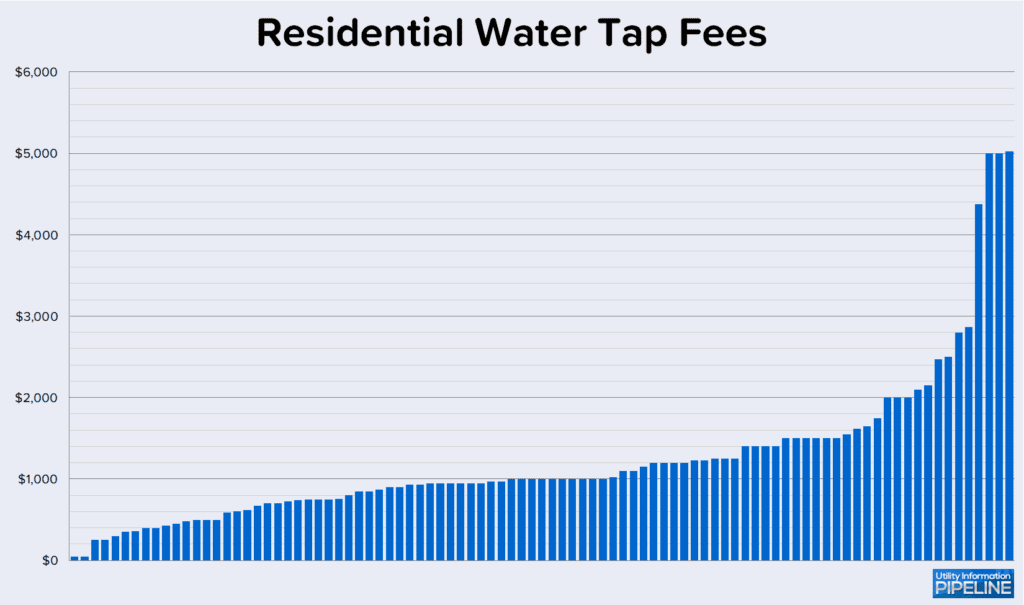
Three other utilities charges based on the time and materials cost incurred for a residential water tap at actual cost.
Utilities responding to the survey charge residential sewer tap fees ranging from $50.00 to $10,000.00 as depicted by this graph:
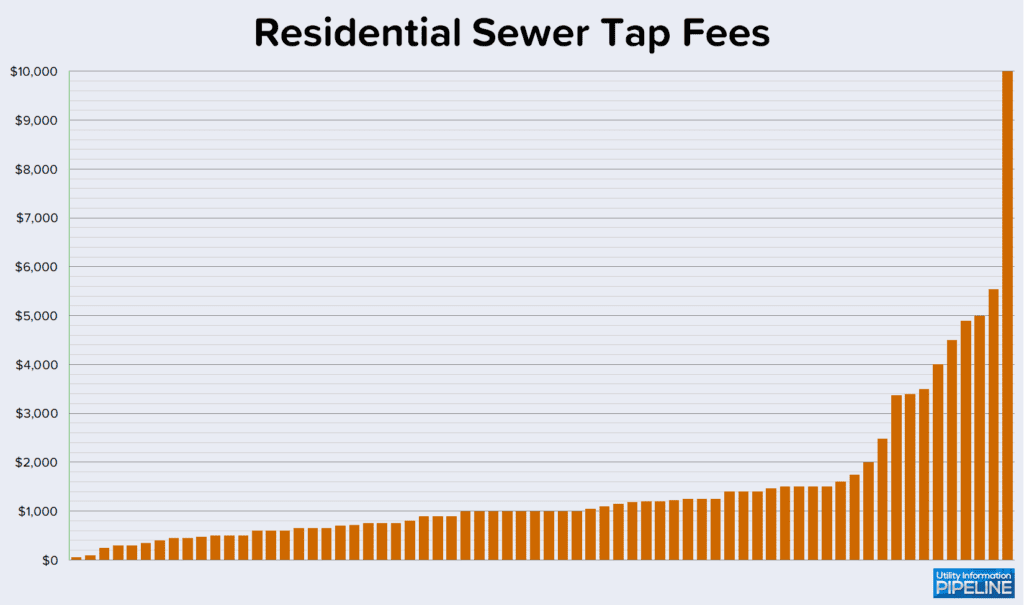
Four additional utilities charge the actual time and materials cost incurred for a residential sewer tap.
Residential water impact fees charged by utilities responding to the survey range from $200.00 to $8,960.00 as shown in this graph:
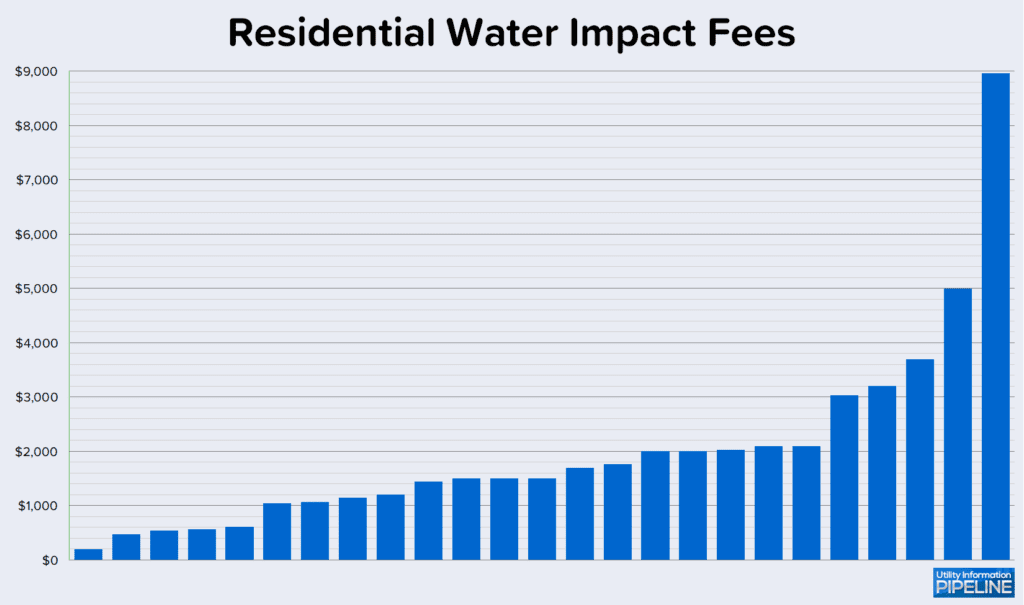
Utilities responding to the survey charge residential sewer impact fees ranging from $280.00 to $10,000.00 as shown here:
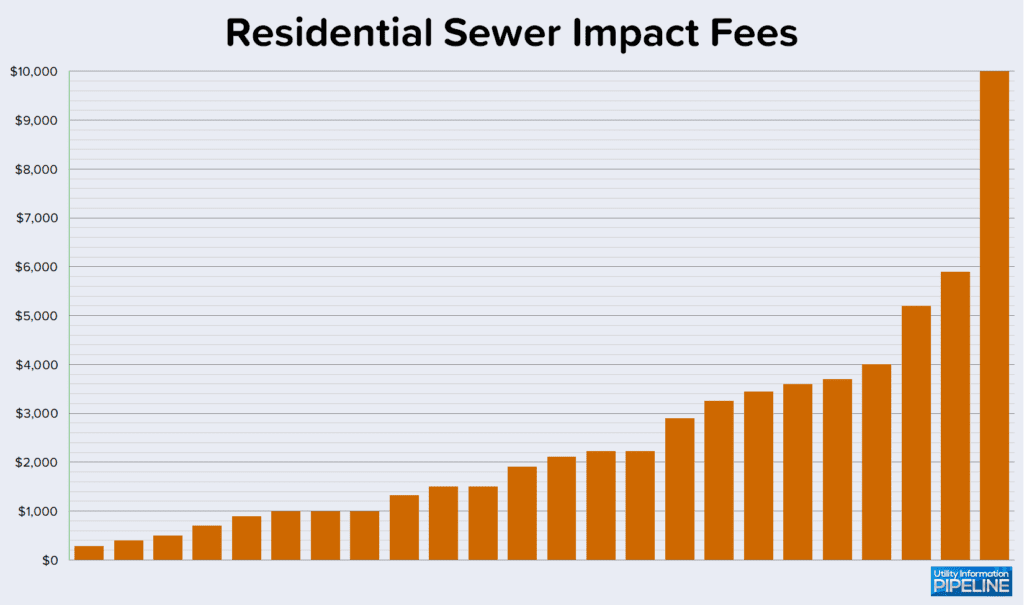
Late fees
Of the 109 participating utilities, 107 charge a late fee. As shown by this graph, charging a late fee as a percentage of the bill is the most popular method (clicking on the any of the graphics will open a larger image in a new window):
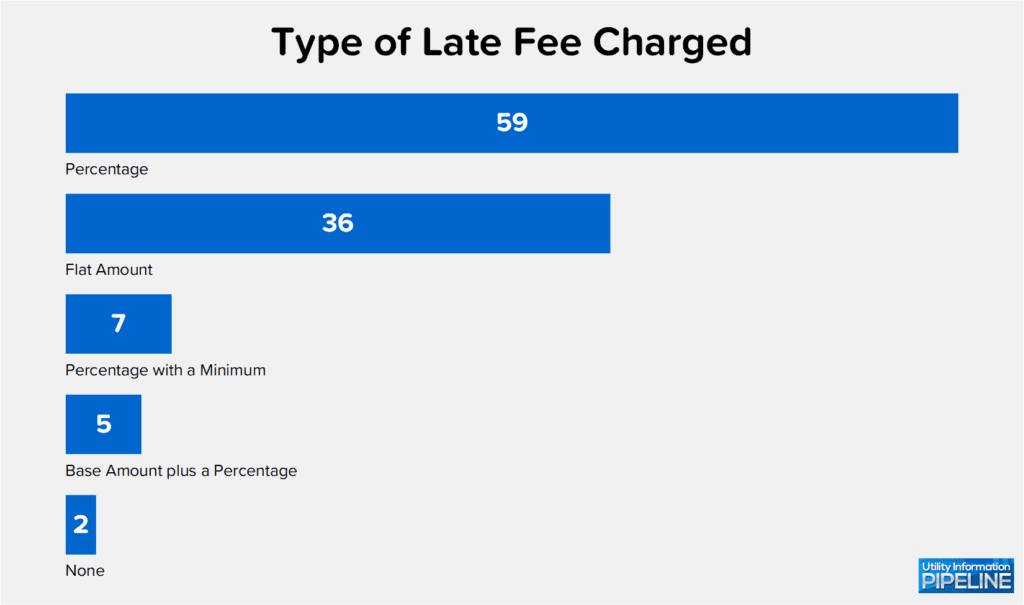
Compared to the 2021 Utility Fee Survey, utilities charging a percentage has decreased slightly (55.1% vs. 57.1%) Those charging a flat amount is up (33.6% vs. 28.6%). Also seeing a slight decrease is utilities charging something other than a percentage or flat amount (down from 13.0% to 11.2%).
Utilities that assess a late fee as a percentage charge from 1% to 25%, with 10% far and away the most popular, as this graph depicts:
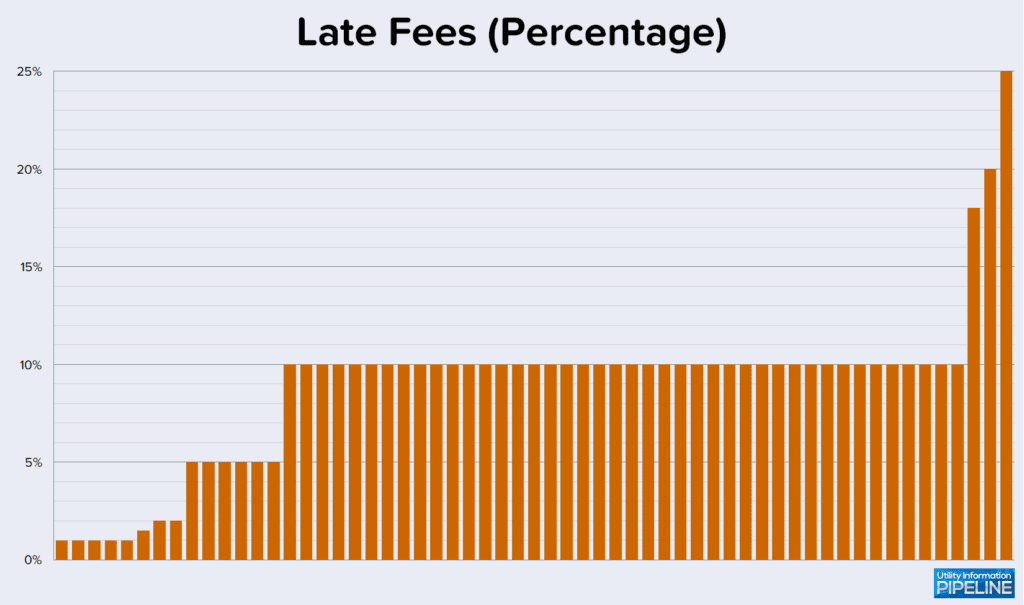
Late fees range from $5.00 to $50.00 for utilities charging a flat amount. This graph illustrates the late fee flat amounts:
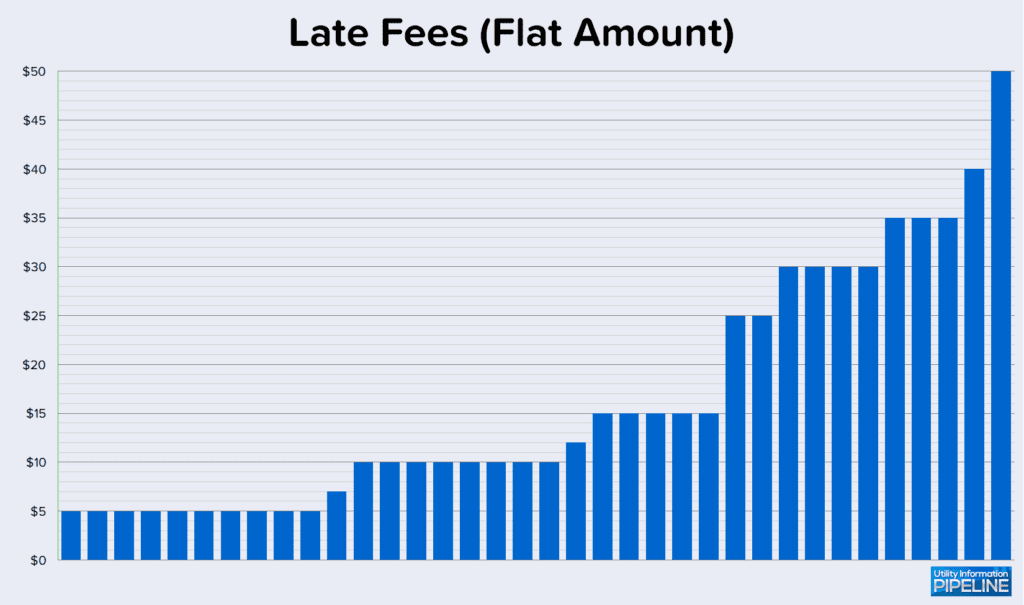
Seven of the utilities (down from 15 in 2021) charge a hybrid late fee – a combination of a percentage with a minimum amount. Here is a graph showing what they charge:
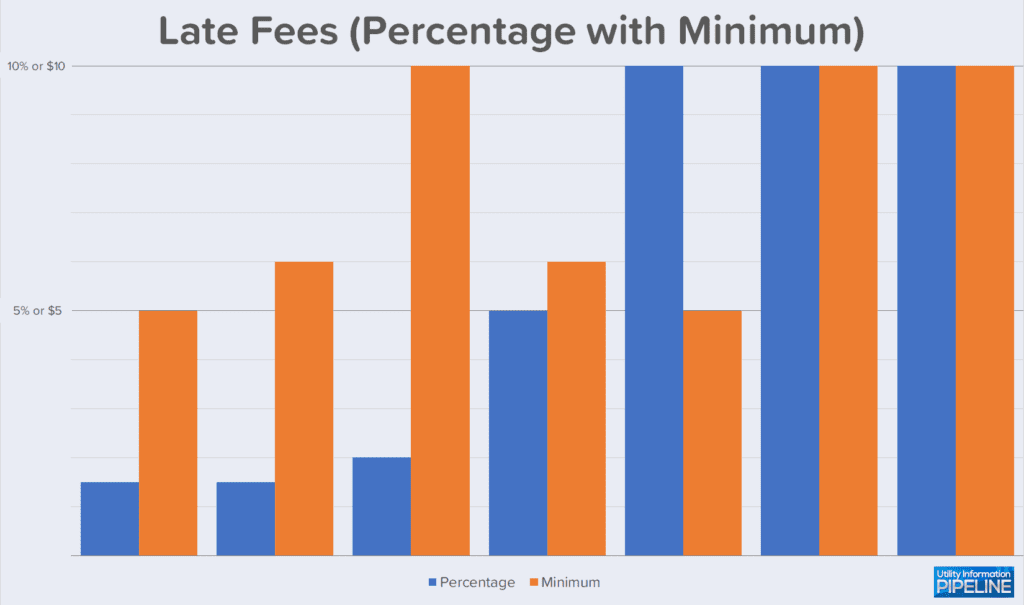
Five utilities charge a base amount plus a percentage as shown below:
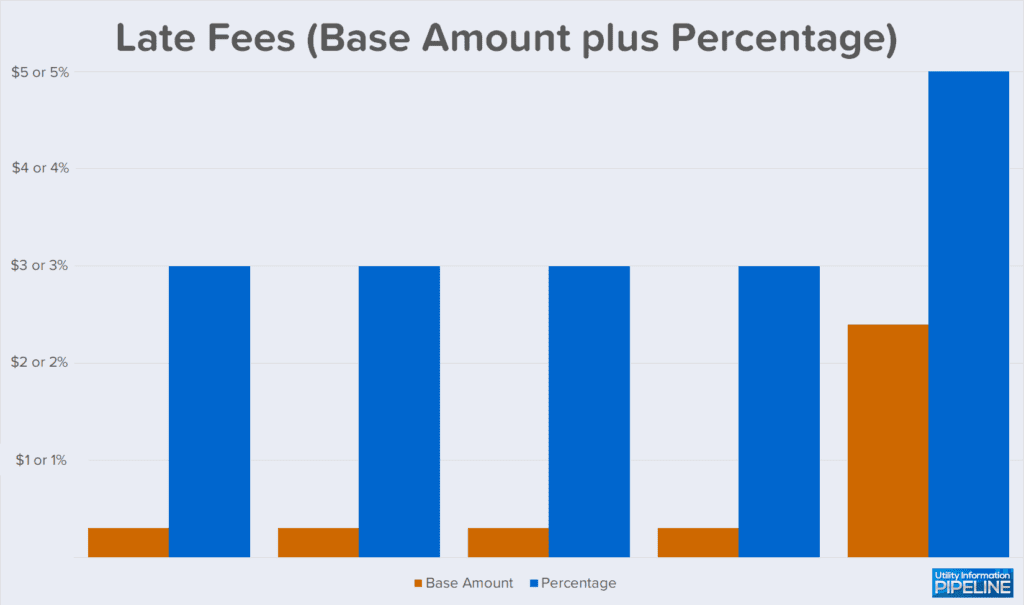
While not technically a fee, this year’s survey again asked how, other than the utility bill, each utility notifies customers that a late fee or penalty has been applied. Here are the responses to that question (the total of all responses is greater than the number of participating utilities because some utilities use multiple methods of contact):
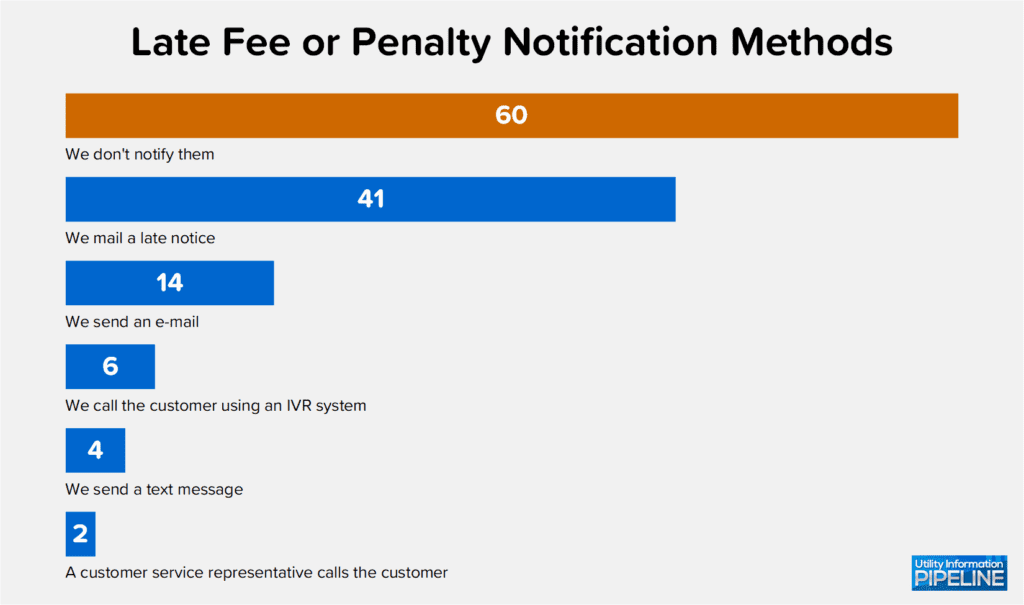
Cut-off fees
Ten of the 109 utilities do not cut off for non-payment. The remaining 99 that do cut off for non-payment all charge a cut-off or reconnect fee as a flat amount. Three of the responding utilities charge an escalating cut-off fee whereby the more times a customer is on the cut-off list, the higher the fee becomes. In those cases, the amount shown in the graph is for first offenders. Additionally, two of the utilities charge a separate disconnect fee and reconnect fee. In those cases, the graph represents the combined total of both fees. Finally, two additional utilities charge a cut-off fee per service. In those cases, the graph assumes all services are being disconnected.
Cut-off or reconnect fees charged by the 99 utilities range from $15.00 to $225.00 as shown below:
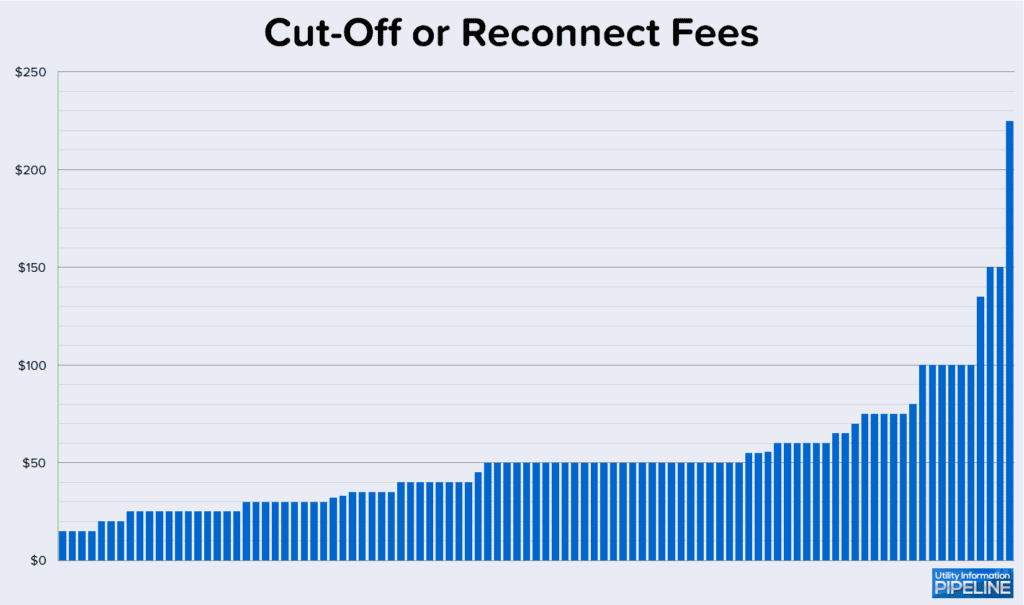
Of the 99 utilities that cut off for non-payment, 76 of them (representing 76.8%) assess the cut-off fee as soon as the cut-off list leaves the office. The percentage of utilities charging the cut-off fee immediately is up 3.9% from the 2021 Utility Fee Survey:
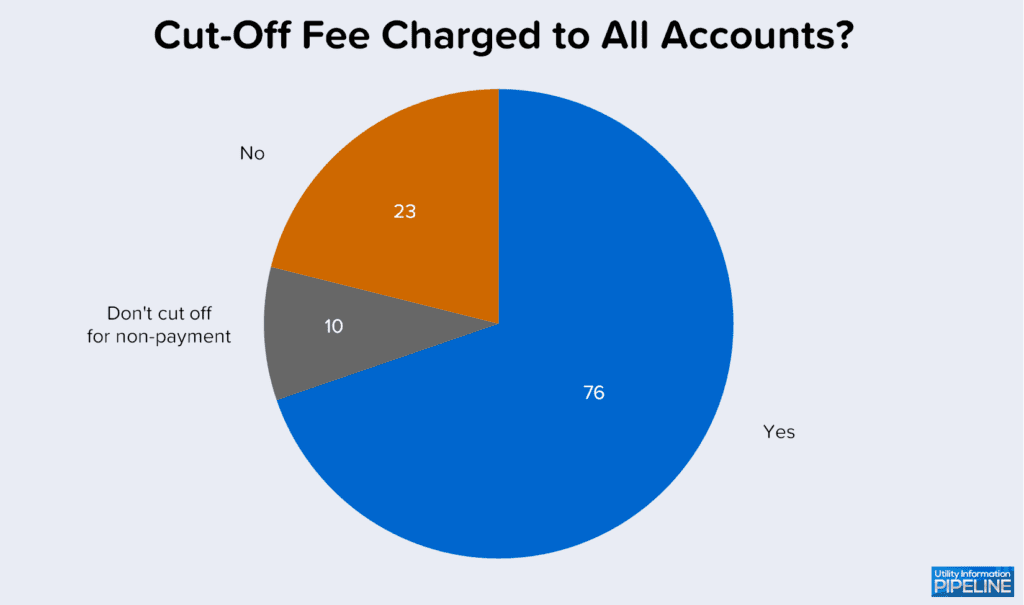
Cut-off fee terminology
As utilities adopt the best practice of charging the cut-off fee as soon as the cut-off list leaves the office, many are finding that terms such as “cut-off fee”, “disconnect fee” or “reconnect fee” are becoming outdated. For that reason, the survey asked what each utility calls its cut-off fee. The results are displayed in the following chart:
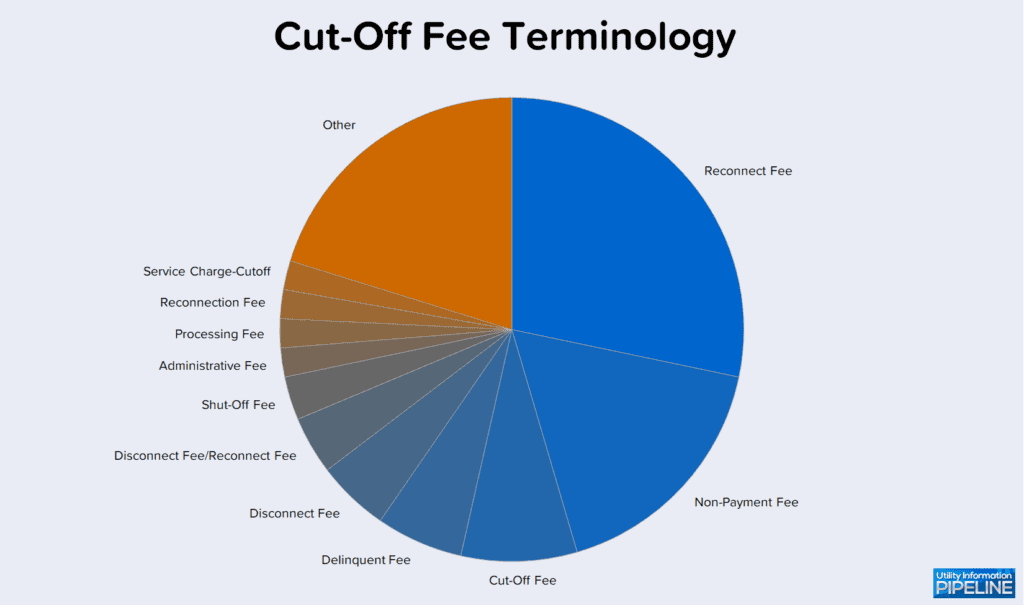
For the number of responses, including the 20 terms included in the “Other” category, please click here.
Again this year, Reconnect Fee is still the most popular term, but Non-Payment Fee and Delinquent Fee have become the second and fourth most popular terms, as many utilities adopt terminology that does not refer to cut-off or reconnection. Calling your cut-off fee Non-Payment Fee, Delinquent Fee, Administrative Fee, or any of the other terms not implying cut-off or reconnection helps to avoid the inevitable arguments with customers who must pay the fee but have not been cut off.
As with late fees, the survey also asked how, other than the utility bill, customers are notified that they are about to be cut-off for non-payment. The responses are shown below (again, the total of all responses is greater than the number of participating utilities because some utilities use multiple methods of contact):
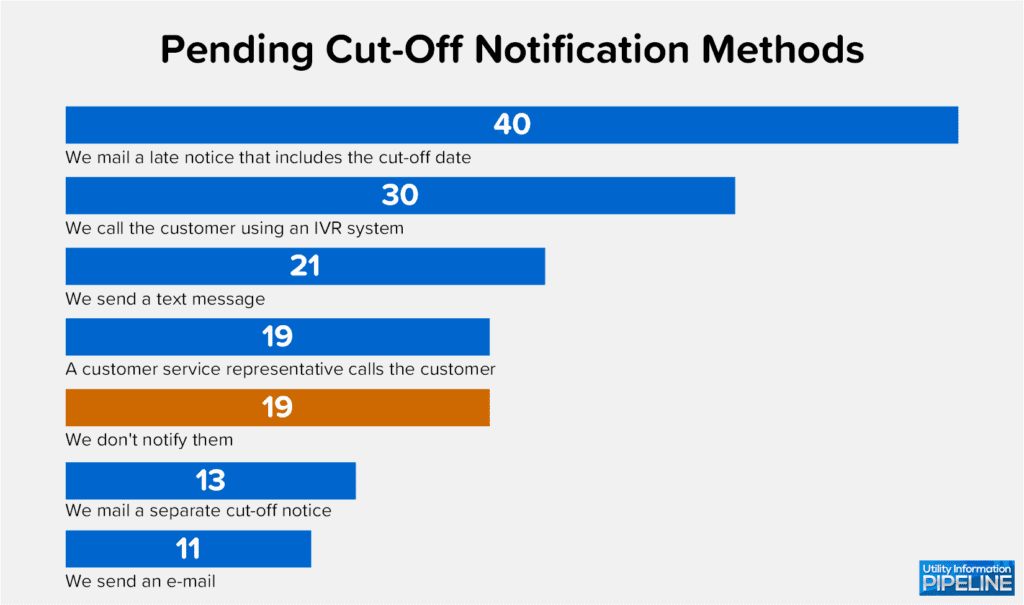
This year’s survey also asked how utilities notify customers after they have been disconnected for non-payment. The responses are shown below (again, a few of the participating utilities employ multiple methods of contact):
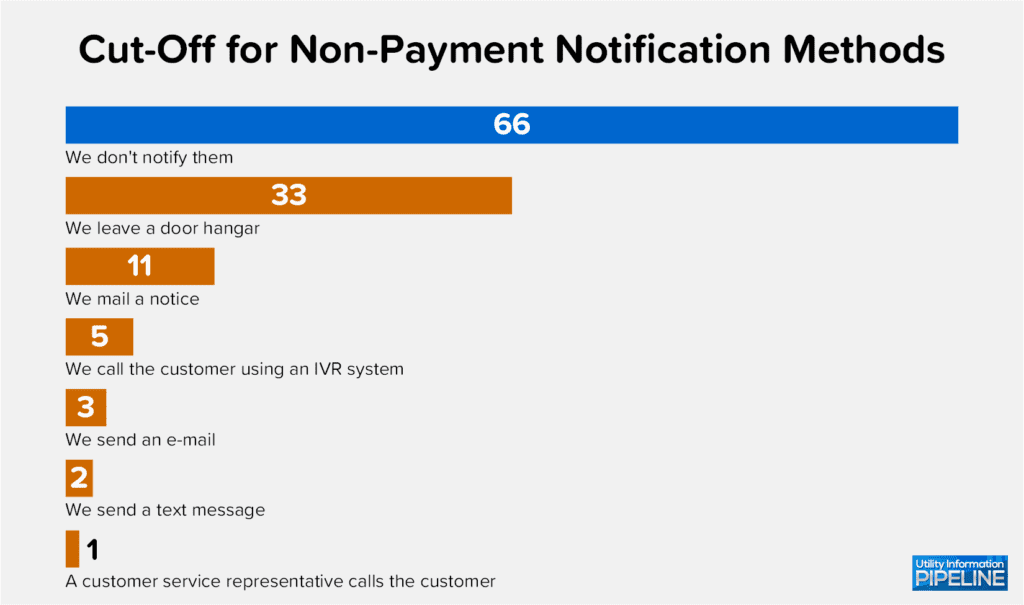
After hours reconnect fees
Of the 99 utilities that cut off for non-payment, 46 of them (representing 46.5%) will reconnect after hours and charge a fee for this service. This is up slightly from 45.0% of responding utilities in the 2021 Utility Fee Survey.
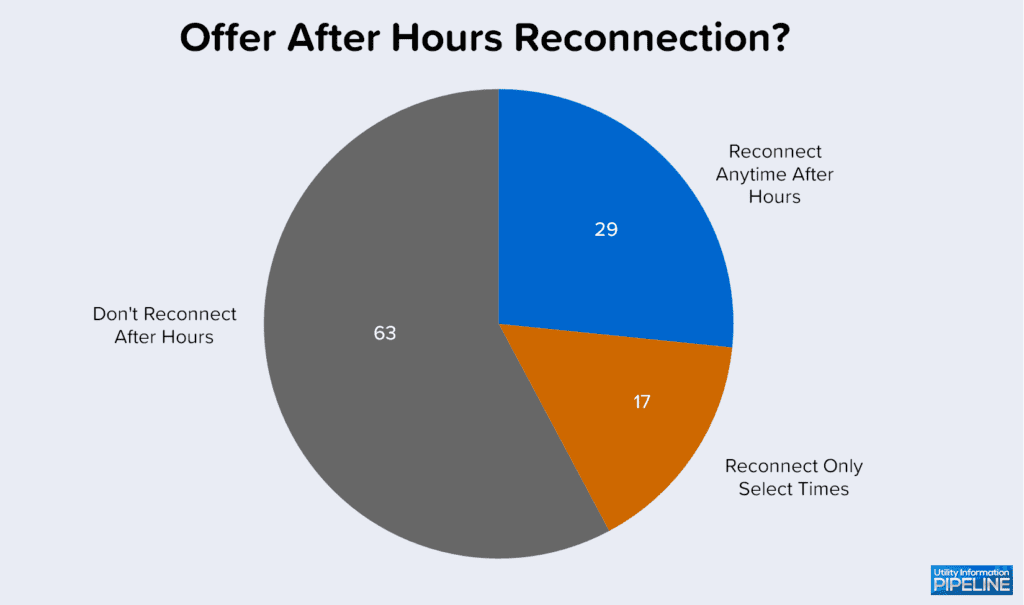
29 of the 46 utilities (or 63.0%) will reconnect anytime after regular office hours. The remaining 17 utilities will only reconnect during selected time periods as shown below:
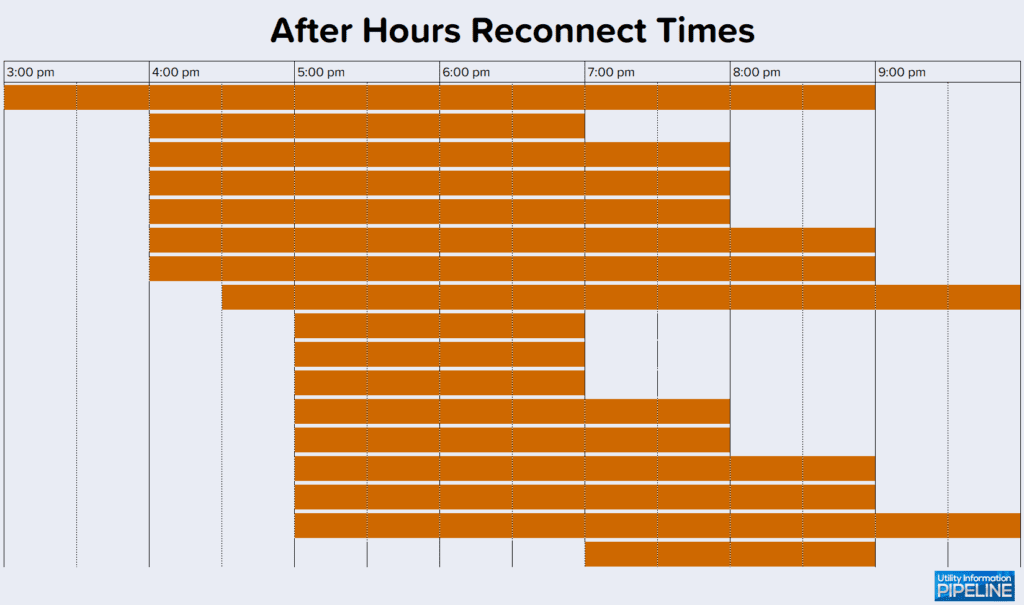
After hours reconnect fee amounts range from $25.00 to $250.00 as shown by the following graph:
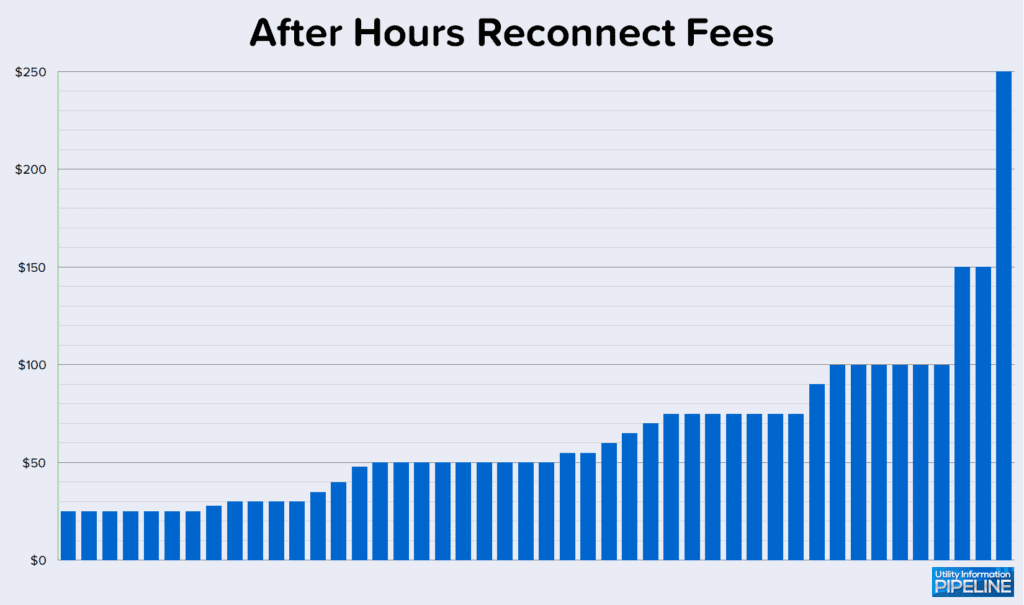
Same day reconnect fees
The survey also asked how many utilities charge a fee for same-day reconnection for non-payment. Three utilities charge a fee for this service, ranging from $10.00 to $30.00, as shown below:
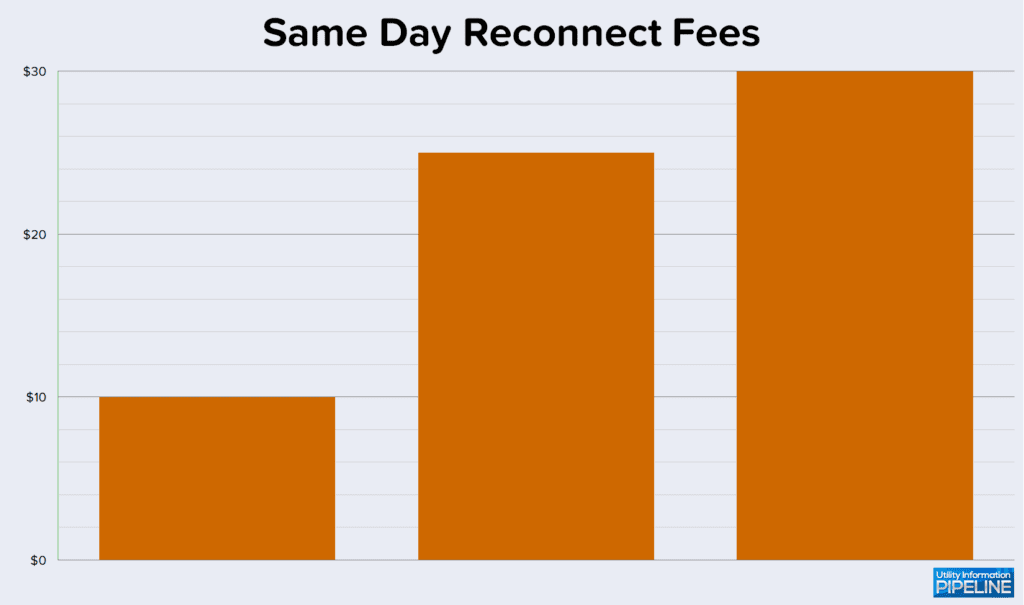
Returned check fees
All 109 participating utilities charge a returned check fee ranging from $10.00 to $50.00, as this graph illustrates (clicking on any of the graphs will open a larger image in a new window):
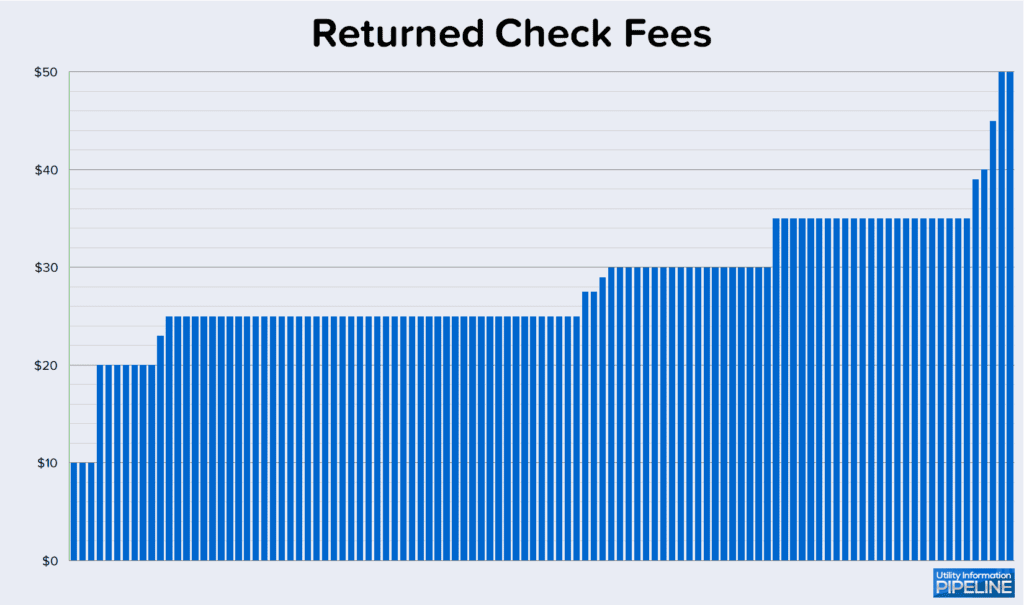
Interestingly, only 55 (or 50.5%) of the responding utilities charge the maximum fee allowed by their state. 40 utilities (representing 36.7%) charge more than the maximum allowed and 14 (or 12.8%) charge less than the maximum allowed.
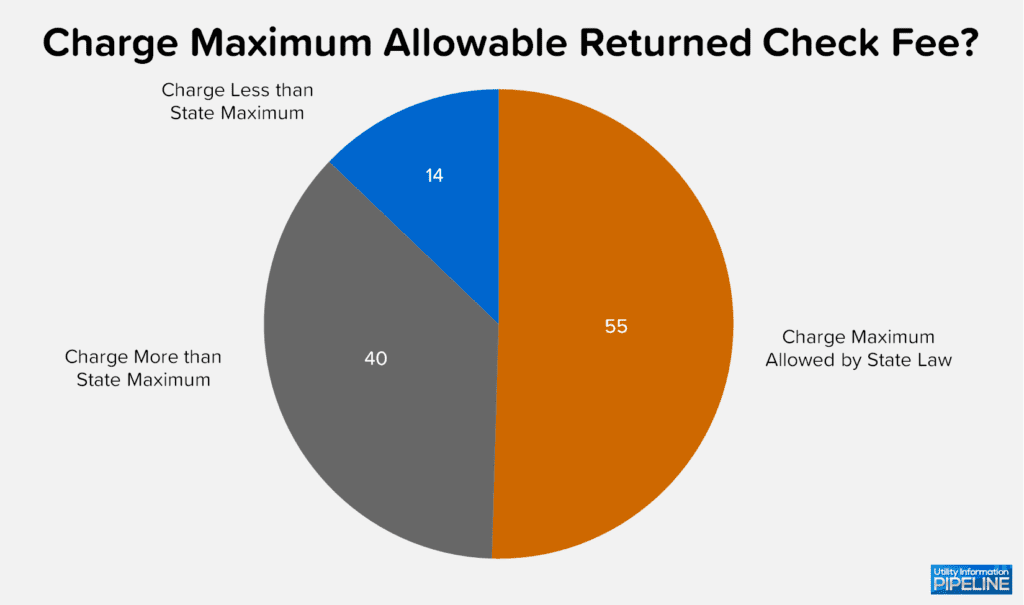
If you’re interested in seeing how your fee compares to the maximum allowed for your state, here is a table with all 50 states.
In my How to Increase Revenues without Raising Rates presentation, one of the recommendations is to charge a non-refundable application fee, in addition to any security deposit, to all new accounts. This year, 58 of the 109 utilities (representing 53.2%) responding to the survey charge such an application or administrative fee. This is the highest percentage reported since the beginning of the Utility Fee Survey, up from 46.5% in 2021, 50.4% in 2019, 47.9% in 2017, and 51.9% in 2015. These application fees range from $5.00 to $250.00 as shown below:
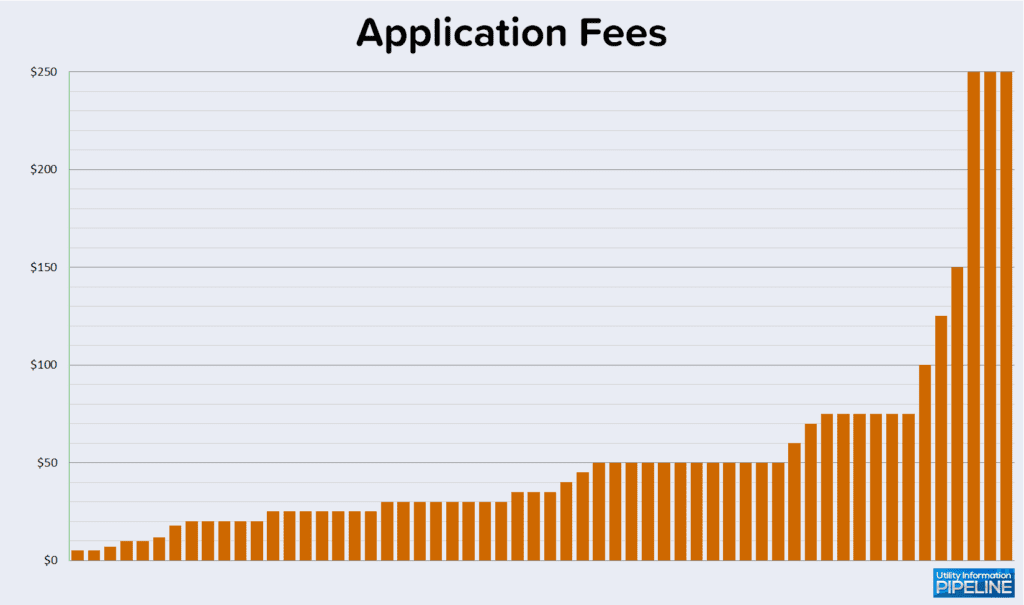
Transfer fees
The Utility Fee Survey also asked how much utilities charge as a transfer fee for transferring service from one account to another. 49 of the 109 utilities (representing 45.0%) charge a transfer fee ranging from $5.00 to $100.00. This is up from 42.3% in 2021. Transfer fees charged by the responding utilities are shown in this graph:
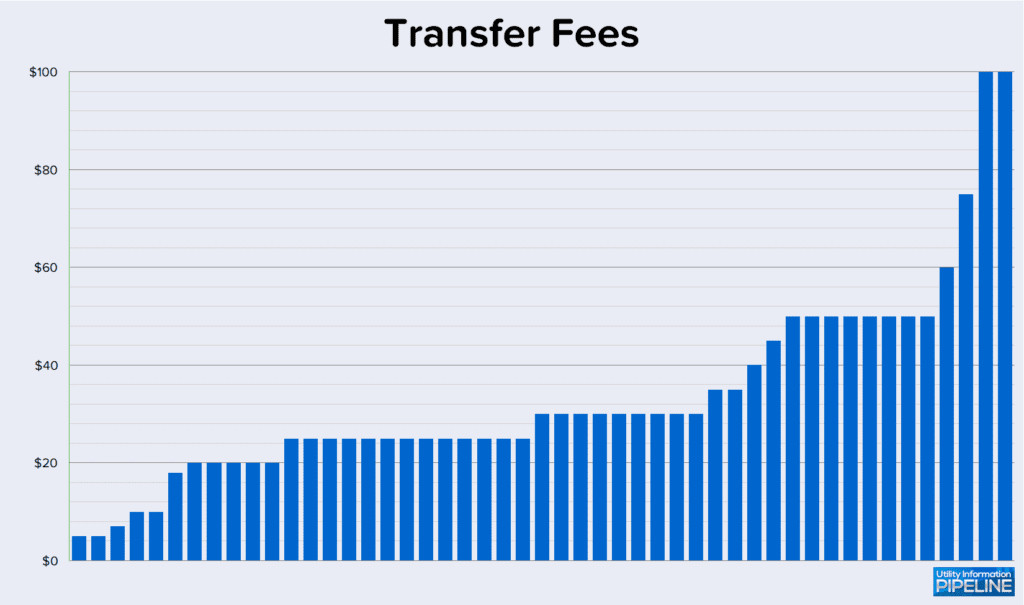
Meter reread fees
25 of the 109 utilities (or 22.9%) charge a meter reread fee if the customer requests their meter be reread. This is up from 17.6% in 2021, but still slightly less than 23.0% in 2019, 23.7% in 2017, and 23.6% in 2015. In many cases, this fee is waived if it turns out the customer was correct and the utility misread the meter. Of the utilities that charge a meter reread fee, the fee ranges from $7.50 to $300.00 as this graph shows:
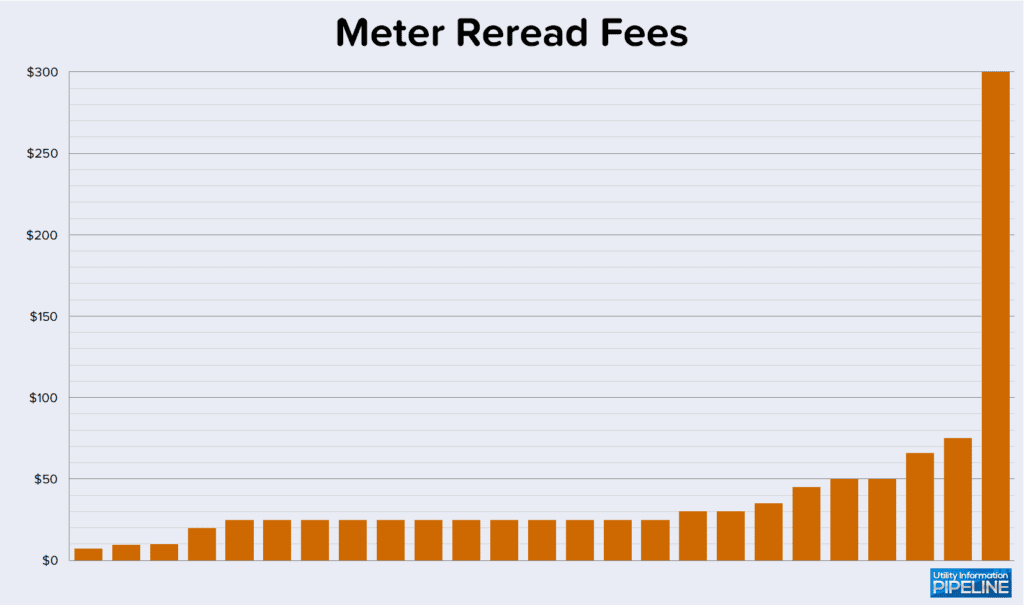
Meter test or calibration fees
For the first time this year, the Utility Fee Survey asked how much utilities charge as a meter test or calibration fee. 53 of the 109 utilities (or 48.6%) charge a fee ranging from $5.00 to $250.00 as shown below:
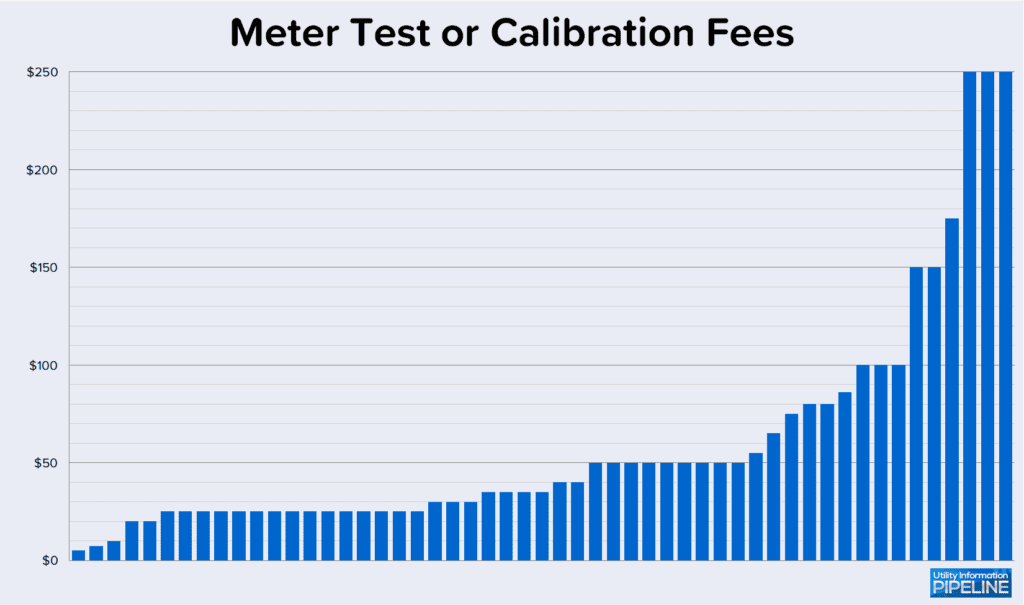
Meter tampering fees
79 of the 109 utilities (or 72.5%) charge a meter tampering fee. This is up from 68.3% in 2021, but down from 73.3% in 2019, 77.1% in 2017, and 73.6% in 2015. Nine utilities charge the actual cost of repairs or cost plus an administrative fee. Six additional utilities recover their costs through the judicial system. Two utilities have an escalating fee that increases with each meter tampering offense. The remaining 73 utilities charge a flat fee ranging from $25.00 to $2000.00 as shown below:
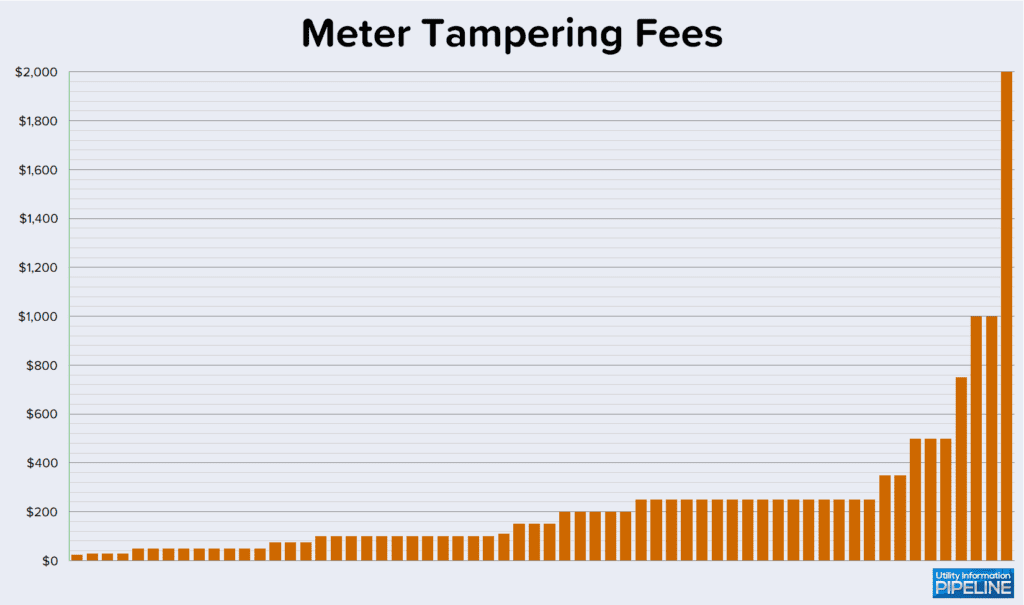
Of the two utilities that charge an escalating fee, one charges $125.00 for the first offense, $250.00 for the second offense, and $500.00 for the third offense. The other charges $100 for the first offense and $200 for the second offense. If there is a third offense, the service is removed.
Convenience fees
Of the 109 utilities responding to the survey, 103 of them (or 94.5%) accept credit cards. This is a slight decrease from 95.1% in 2021, but an increase from 90.4% in 2019, 89.0% in 2017, and 81.1% in 2015. Clearly, credit card acceptance has become standard practice for most utilities.
I’ve written previously about convenience fees and one of the fallacies of charging them. Of the 103 that do accept credit cards, 72 (or 69.9%) of these charge a convenience fee as show below:
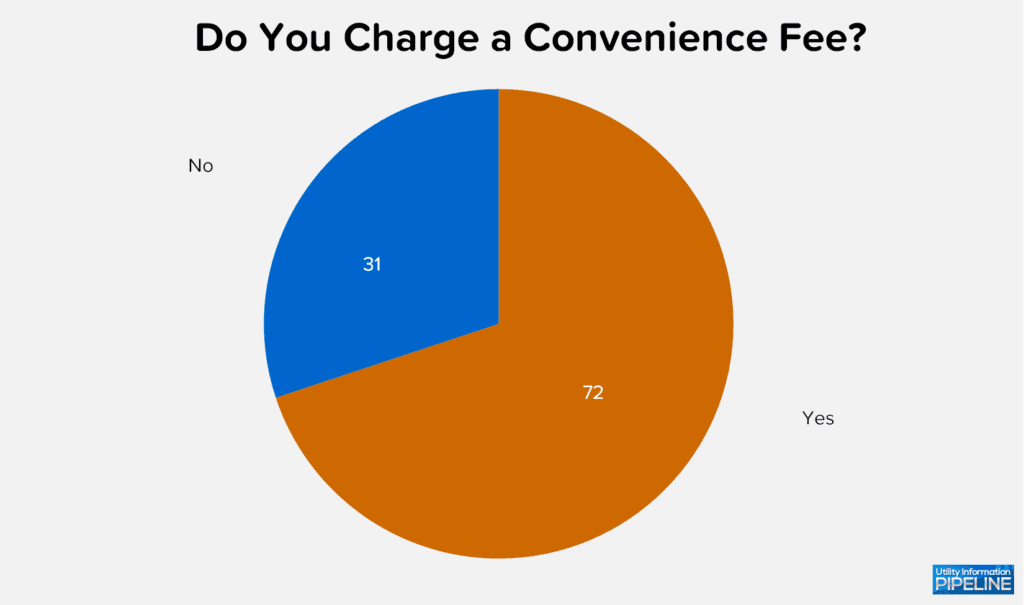
Below is a graphic depicting which methods of credit card payments are assessed convenience fees:
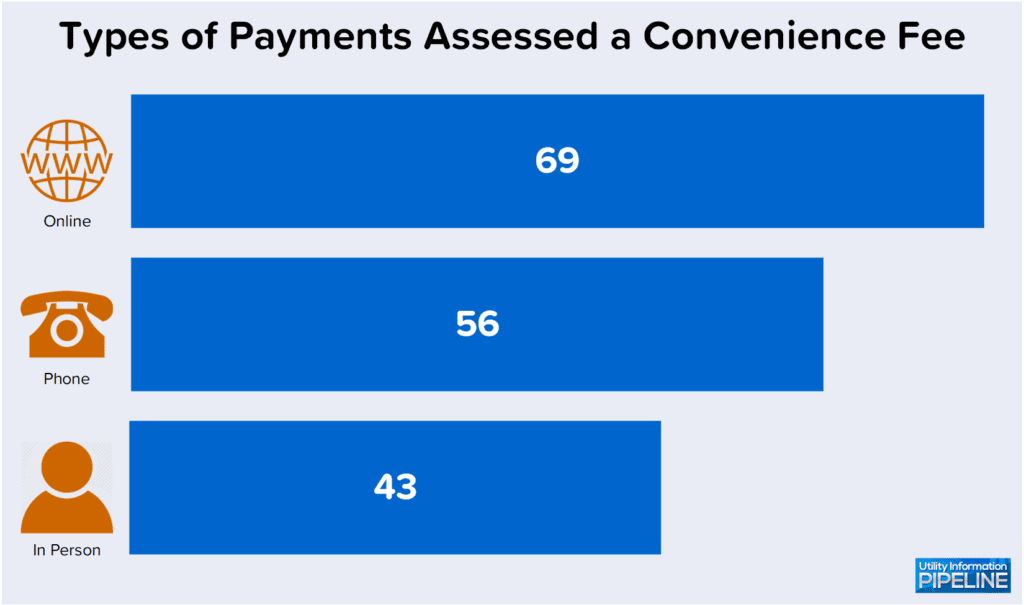
The survey also asked if the convenience fee is charged by the utility or by a third party. Of the 72 utilities that charge a convenience fee, 63 (or 87.5%) are charged by a third party as shown below. This is up from 84.6% in 2021, 81.2% in 2019, and 69.4% in 2017.
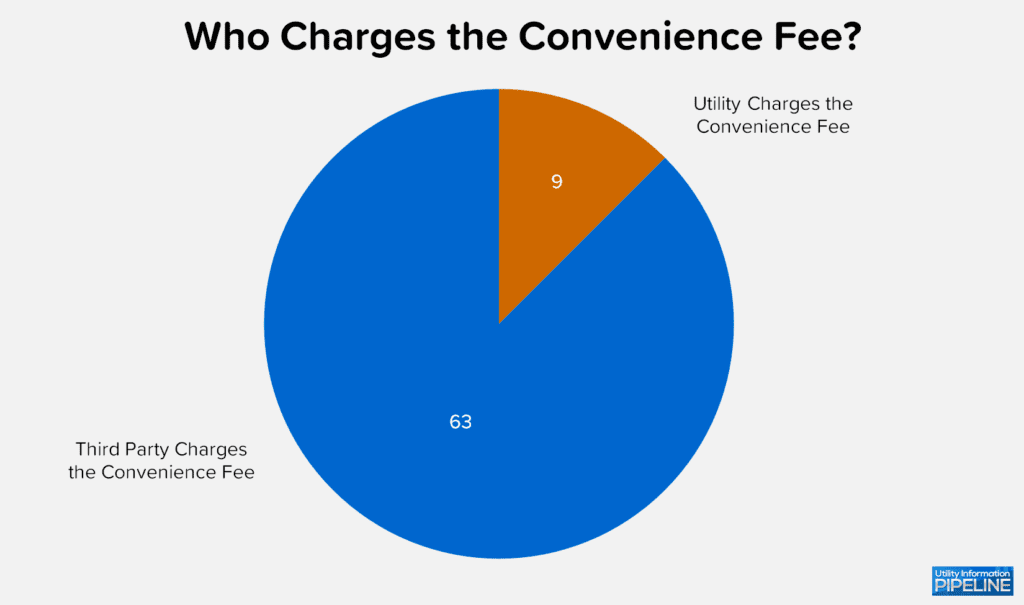
The convenience fees charged by these utilities are too diverse in how they are assessed to be graphed, so they are presented here in a table.
Does your fee schedule need reviewing?
If you think your fee schedule needs to be updated, please give me a call at 919-673-4050 or e-mail me at gary@utilityinformationpipeline.com to learn how fee review could help.